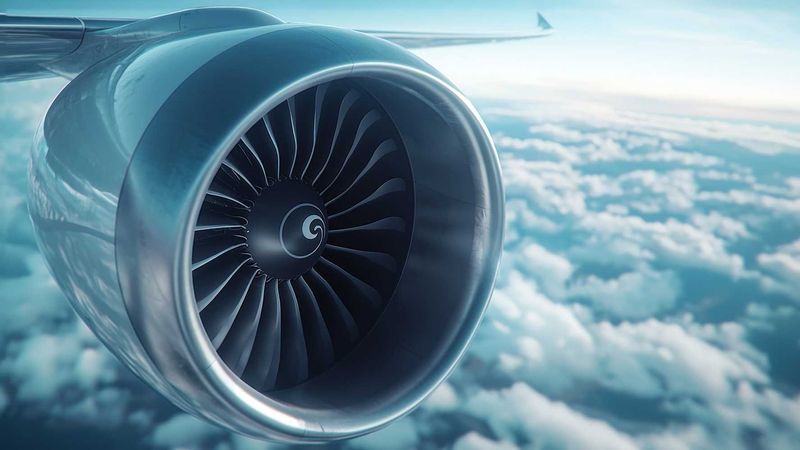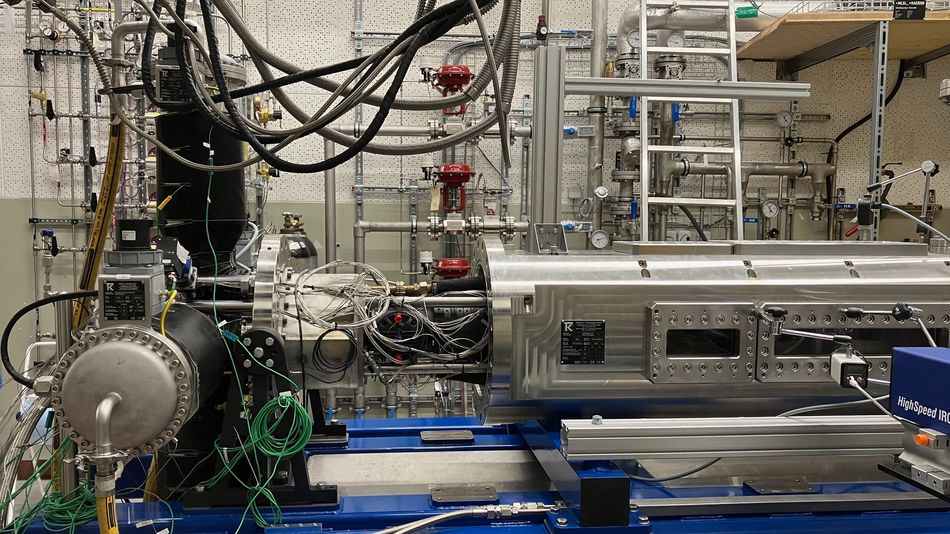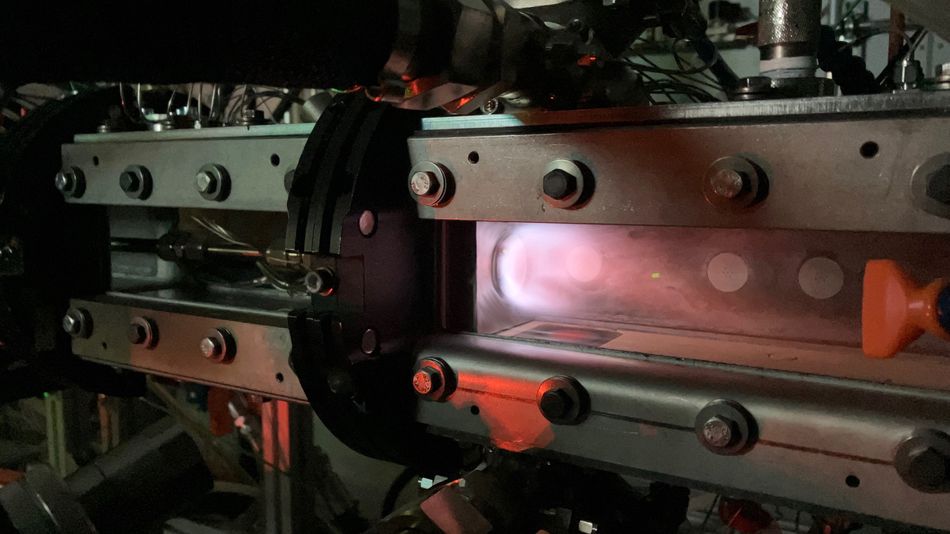Researchers are making jet engines fit for the hydrogen age
Hydrogen-powered planes are set to take wing around the world in the future. To make this possible, engineers have to develop the jet engines that will power them. Experiments by researchers at ETH Zurich are now providing the necessary basis for making these engines powerful and durable.

The jet engines of commercial aircraft shall be powered by hydrogen (symbol image). (Image created with AI: Dzmitry / Adobe Stock)
This article was first published on
ethz.chEurope is preparing for climate-neutral flight powered by sustainably produced hydrogen. Last year, the EU launched a project to support industry and universities in the development of a hydrogen-powered medium-haul aircraft. Among other things, jet engines will have to be adapted to run on the new fuel. Today's engines are optimised for burning kerosene.
“Hydrogen burns much faster than kerosene, resulting in more compact flames,” explains Nicolas Noiray, Professor in the Department of Mechanical and Process Engineering at ETH Zurich. This has to be taken into account when designing hydrogen engines. Experiments by Noiray’s team now provide an important basis for this. The team has just published its results in the journal external pageCombustion and Flame.
One problem is vibrations, which engineers try to minimise. In typical jet engines, about twenty fuel injection nozzles are arranged around the annular combustion chamber of the engine. The turbulent combustion of the fuel there generates sound waves. These waves are reflected back from the walls of the chamber and have a feedback action on the flames. This coupling between the sound wave and the flames could give rise to vibrations that would induce a heavy load on the engine combustion chamber. “These vibrations can fatigue the material, which in the worst case could lead to cracks and damage,” says Abel Faure-Beaulieu, a former postdoctoral researcher in Noiray’s group. “This is why, when new engines are being developed, care is taken to ensure that these vibrations do not occur under operating conditions.”
Simulating conditions at cruising altitude
When engineers developed today’s kerosene engines, they had to get these vibrations under control. They achieved this by optimising the shape of the flames as well as the combustion chamber’s geometry and acoustics. However, the type of fuel has a major impact on the interactions between sound and flame. This means engineers and researchers must now make sure that they will not arise in a new hydrogen engine. An elaborate test and measurement facility at ETH Zurich allows Noiray to measure the acoustics of hydrogen flames and predict potential vibrations. As part of the EU project HYDEA, in which he is involved together with GE Aerospace, he tests hydrogen injection nozzles produced by the company.

“Our facility allows us to replicate the temperature and pressure conditions of an engine at cruising altitude,” Noiray explains. The ETH researchers can also recreate the acoustics of various combustion chambers, enabling a wide range of measurements. “Our study is the first of its kind to measure the acoustic behaviour of hydrogen flames under real flight conditions.”

In their experiments, the researchers used a single nozzle and then modelled the acoustic behaviour of the collection of nozzles as it would be arranged in a future hydrogen engine. The study is helping engineers at GE Aerospace to optimise the injection nozzles and to pave the way for a high performance hydrogen engine. In a few years, the engine should be ready for initial tests on the ground, and in the future, it could propel the first hydrogen fuelled aircrafts.
ETH Professor Noiray does not consider the development of the engines or the development of hydrogen tanks for aircraft to be the greatest challenge in transitioning aviation to the hydrogen age. “Humanity has flown to the moon; engineers will undoubtely be able to develop hydrogen planes,” he says. But planes alone aren’t enough. Another major challenge, Noiray says, is to put in place the entire infrastructure for hydrogen aviation, including producing climate-neutral hydrogen in sufficient quantities and transporting it to airports. Achieving this within a reasonable timeframe requires a concerted effort now.
Why hydrogen for aviation?
Most ground vehicles can be electrified with batteries; however, batteries are too heavy for high-performance aircraft. Storing the energy needed to fly 200 passengers over thousands of kilometers with hydrogen in cryogenic tanks weighs at least thirty times less than storing it in batteries. “In the coming decades, only small aircrafts with very low payload capacity will be battery-powered,” ETH Professor Noiray says. “For passenger and cargo aircraft, synthetic fuels are the only alternative to today’s kerosene, and hydrogen is the most economical to produce sustainably.”
Depending on the aircraft’s size and range, there are two potential hydrogen solutions. For smaller regional aircraft with low cruising speeds and short ranges, hydrogen can be converted into electricity in a fuel cell on board. This drives propellers via an electric motor. However, for long-haul commercial aircrafts, fuel cells are unsuitable due to their size and weight. In the future, these aircrafts will be propelled by jet engines fuelled with hydrogen. Several industrial consortia are currently working to develop such engines.
Reference
Faure Beaulieu A, Dharmaputra B, Schuermans B, Wang G, Caruso S, Zahn M, Noiray N: Measuring acoustic transfer matrices of high-pressure hydrogen/air flames for aircraft propulsion. Combustion and Flame, 22. Oktober 2024, doi: external page10.1016/j.combustflame.2024.113776